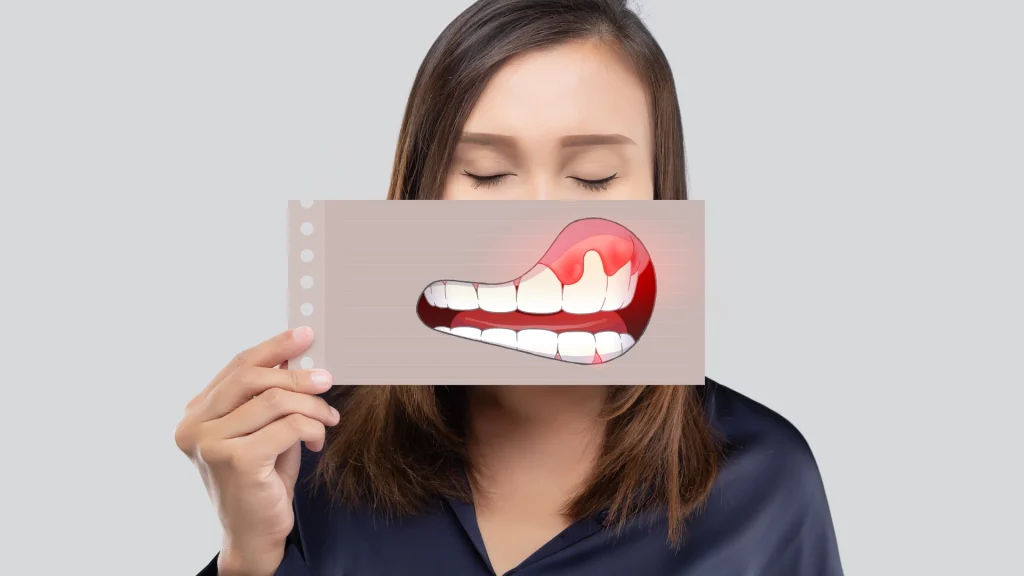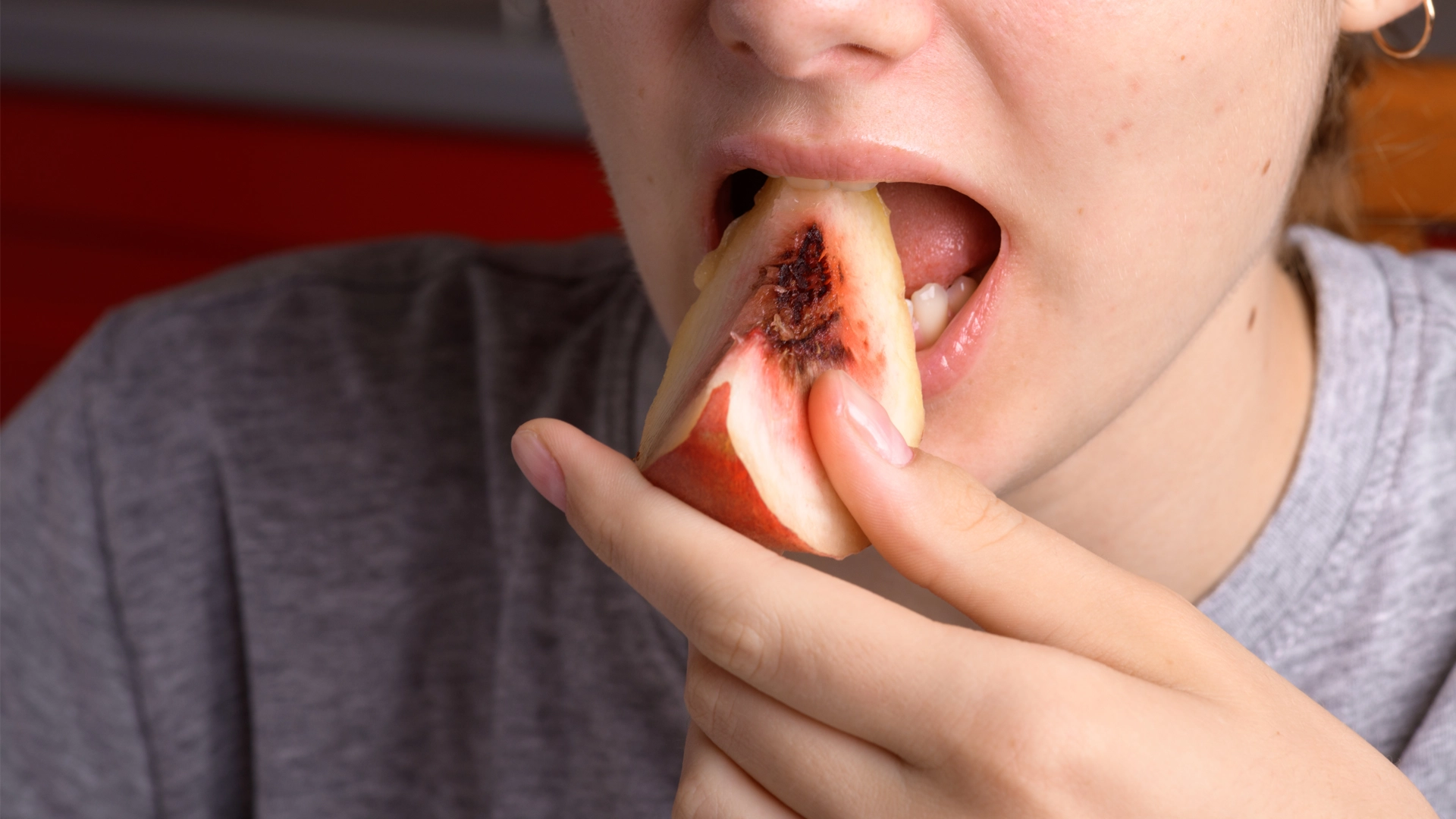The American Diet is SAD
The Standard American Diet or SAD is a pretty appropriate label for how we’re eating. High sugar, high saturated fat, low polyols, low fiber, and low polyunsaturated fats are all constant in our diet.
This type of diet increases the risk of periodontal disease. Gum disease, also known as periodontal disease, is one of the most common oral health disorders globally, impacting millions of people regardless of age, gender, or ethnicity. Characterized by inflammation and infection of the gums and supporting tissues of the teeth, gum disease offers major hazards not just to dental health but also to general well-being.
While traditional preventative methods like frequent brushing, flossing, and professional dental cleanings remain important, a new study shows that dietary habits have a critical role in preventing the beginning and progression of gum disease.
What We Should Be Eating
In recent years, scientific research has emphasized the complicated relationship between diet and dental health. The concept of ‘you are what you eat’ is particularly relevant in the context of periodontal health, since dietary choices have a significant impact on the integrity of oral tissues and the balance of oral microbiota. As a result, the study of dietary treatments in the prevention and treatment of gum disease is a growing subject of research, providing new insights into holistic approaches to oral care.
Vitamins A, B, C, calcium, zinc, and polyphenols have been found to protect against the onset of gum disease. Other micronutrients like vitamin D, E, K, and magnesium are uncertain but show that an increase of these items improves gut health through pro- and pre-biotic compounds.
The Mediterranean, DASH, vegetarian, and Okinawa diets, which match to the healthy dietary intakes, are the perfect examples of diets that lower the risk of periodontal disease.

Inflammation And Diet
One of the key reasons that nutrition is crucial for periodontitis is its effect on inflammation. Certain diets, such as those heavy in sugar, refined carbs, and saturated fats, can trigger inflammation throughout the body, including the gums. Chronic inflammation exacerbates periodontal disease by reducing the gums’ capacity to fight bacteria, resulting in further tissue damage and bone loss around the teeth.
Several studies have established a link between tooth loss, periodontal health, and diet. Furthermore, several vitamins, minerals, and trace elements influence bone growth and periodontal regeneration. The impact of dietary intervention studies on improving the quality of life and well-being of patients with periodontal disease has been discussed and studied many times (Najeeb et. al, 2016).
Nutrients are essential for gum health and immune system function. For example, vitamin C is required for collagen formation, which is critical for gum tissue repair and regeneration. Vitamin C deficiency can weaken the gums and raise the risk of periodontal diseases. Similarly, vitamin D is required for calcium absorption and bone health, particularly the bone that holds the teeth. Low levels of vitamin D have been linked to an increased risk of periodontitis.
A balanced diet is critical in sustaining the synergy between oral microbiota and periodontal health. Although many macro- and micronutrients enter the gastrointestinal system via saliva, chewing is an important part of the nutrition acquisition process. It is concerned with the integrity of periodontal tissue, which is impacted by a variety of variables including tobacco use, dental hygiene, epigenetic and genetic factors, diet, and overall health (Kato I. et. al, 2017).

Dentists Still Don’t Like Sugar
Plaque is a biofilm composed of glycoproteins, mucin, and bacteria that clings to oral cavity surfaces. If plaque sits on teeth for a few days, it will mineralize and create calculus. Porphyromonas gingivalis, Prevotella intermedia, Tannerella forsythia, and Treponema denticola are among the periodontal pathogens that might live on the porous calculus. Sugar consumption has long been identified as the key contributor to plaque development. It has been discovered that sucrose is more cariogenic than fructose or glucose. Sugars contribute to dental caries and periodontal disease because bacteria digest them and generate acid, causing demineralization of the tooth structure (Frostell G, 1991).
Brushing And Flossing Just Isn’t Enough
Because nutrition is a risk factor for PDs and other noncommunicable diseases, and the risk for PDs is shown early in life, it appears that nutritional management is the most important component for prevention because it can prevent PDs and, by extension, other major CDs. Furthermore, a balanced diet can aid in the treatment of Parkinson’s disease and, as a result, assist in avoiding the emergence of CDs (Martinon et. al, 2021).
The impact of micronutrients such as vitamins D, E, K, and magnesium is uncertain, while others like vitamins A, B, C, calcium, zinc, and polyphenols have been found to prevent and protect the body more from certain diseases, including periodontitis. As a result, Western diets with low intakes of these latter nutrients induce PDs, whereas Mediterranean diets with greater intakes contribute to periodontal health.
Wrapping It Up
The importance of food in avoiding gum disease cannot be over-emphasized. A well-balanced and healthy diet not only promotes overall health but also helps to maintain good gum health. Individuals may assist in lowering gum inflammation and boost the body’s natural defense systems against periodontal disease by eating meals high in anti-inflammatory nutrients such as fruits, vegetables, whole grains, and omega-3 fatty acids. Furthermore, maintaining a sufficient diet of vital vitamins and minerals, such as vitamin C and vitamin D, is critical for preserving gum tissue integrity and bone health, both of which are important in avoiding gum disease development. Limiting sugary meals, refined carbs, and saturated fats can help reduce
References
Armitage, G. C., & Robertson, P. B. (2009). The Biology, Prevention, Diagnosis and Treatment of Periodontal Diseases. Ada.org, 140, 36S-43S. https://doi.org/10.14219/jada.archive.2009.0356
Frostell, G., Birkhed, D., Edwardsson, S., Goldberg, P., Petersson, L., Priwe, C., & Winholt, A. S. (1991). Effect of Partial Substitution of Invert Sugar for Sucrose in Combination with Duraphat® Treatment on Caries Development in Preschool Children: The Malmö Study. Caries Research, 25(4), 304–310. https://doi.org/10.1159/000261381 https://pubmed.ncbi.nlm.nih.gov/1913770/
Kato, I., Vasquez, A. A., Moyerbrailean, G. A., Land, S., Djurić, Z., Sun, J., Lin, H. S., & Ram, J. L. (2016). Nutritional correlates of human oral microbiome. Journal of the American College of Nutrition, 36(2), 88–98. https://www.ncbi.nlm.nih.gov/pmc/articles/PMC5477991/
Martinon, P., Fraticelli, L., Giboreau, A., Deroanne, C., Bourgeois, D., & Carrouel, F. (2021). Nutrition as a key modifiable factor for periodontitis and main chronic diseases. Journal of Clinical Medicine, 10(2), 197. https://www.researchgate.net/publication/348325686_Nutrition_as_a_Key_Modifiable_Factor_for_Periodontitis_and_Main_Chronic_Diseases
Najeeb, S., Zafar, M. S., Khurshid, Z., Zohaib, S., & Almas, K. (2016). The Role of Nutrition in Periodontal Health: An update. Nutrients, 8(9), 530. https://doi.org/10.3390/nu8090530
https://www.ncbi.nlm.nih.gov/pmc/articles/PMC5037517/



